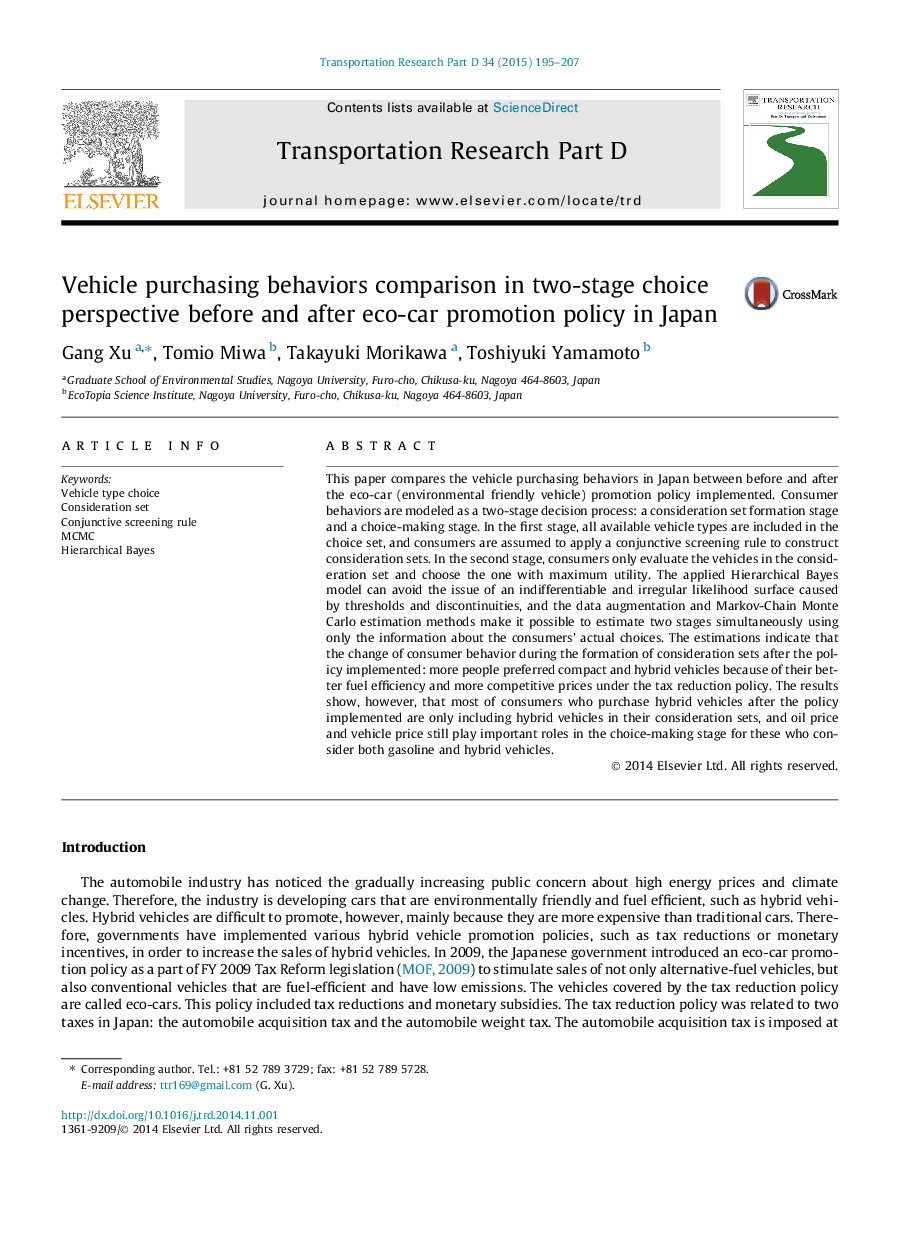| Article ID | Journal | Published Year | Pages | File Type |
|---|---|---|---|---|
| 7500680 | Transportation Research Part D: Transport and Environment | 2015 | 13 Pages |
Abstract
This paper compares the vehicle purchasing behaviors in Japan between before and after the eco-car (environmental friendly vehicle) promotion policy implemented. Consumer behaviors are modeled as a two-stage decision process: a consideration set formation stage and a choice-making stage. In the first stage, all available vehicle types are included in the choice set, and consumers are assumed to apply a conjunctive screening rule to construct consideration sets. In the second stage, consumers only evaluate the vehicles in the consideration set and choose the one with maximum utility. The applied Hierarchical Bayes model can avoid the issue of an indifferentiable and irregular likelihood surface caused by thresholds and discontinuities, and the data augmentation and Markov-Chain Monte Carlo estimation methods make it possible to estimate two stages simultaneously using only the information about the consumers' actual choices. The estimations indicate that the change of consumer behavior during the formation of consideration sets after the policy implemented: more people preferred compact and hybrid vehicles because of their better fuel efficiency and more competitive prices under the tax reduction policy. The results show, however, that most of consumers who purchase hybrid vehicles after the policy implemented are only including hybrid vehicles in their consideration sets, and oil price and vehicle price still play important roles in the choice-making stage for these who consider both gasoline and hybrid vehicles.
Related Topics
Life Sciences
Environmental Science
Environmental Science (General)
Authors
Gang Xu, Tomio Miwa, Takayuki Morikawa, Toshiyuki Yamamoto,
